Player profile: Quintana's dramatic improvement makes him a legit SP2

To kick off our fantasy baseball preview, Michael Beller will profile certain players who may not fit as a breakout, sleeper or bust (all of which we'll discuss in our preview), but who will still make a major impact in fantasy baseball this season.
Want to find one of 2014’s most underrated starting pitchers? Let’s use process of elimination.
Last year, 34 pitchers threw at least 200 innings. Of those 34, 18 were in the top 30 in ERA. Of those 18, half had a sub-3.00 FIP, placing them in the top 14 in the league. Eight of those pitchers fanned at least eight batters per inning, but just one posted a HR/FB ratio of less than six percent. Who was it? The White Sox’ Jose Quintana.
Player profile: Corey Dickerson provides power without a huge price
I like numbers, and I’ll admit that if you play with them long enough, you can find the right combination to make almost any pitcher stand alone. By way of example, one pitcher who didn’t qualify for our pool right of the bat was Clayton Kershaw, because his early-season injury kept him from throwing 200 innings. The point here isn’t to suggest that Quintana is an ace, but rather to shine a light on an underappreciated talent. Quintana was 30th in ERA (3.32), 10th in FIP (2.81) and second in HR/FB ratio (5.1 percent) last year, despite the White Sox calling one of the league’s most homer-friendly parks their home.
In just about every important metric, Quintana, who just turned 26 on Jan. 24, took a step forward last year. His strikeout rate increased to 21.5 percent (28th among qualified pitchers) from 19.7 percent. He cut his walk rate to 6.3 percent from 6.7 percent. His 15.2-percentage-point spread between K-rate and walk-rate was tied with another favorite of mine, Tyson Ross, and was better than the likes of James Shields and Adam Wainwright.
Quintana’s ability to miss bats and aversion to the free pass, taken together, would make him a solid, but not special, pitcher. The way he kept the ball in the park last year is what put him over the top.
Player Profile: Josh Harrison a big risk after breakout 2014 season
With a moniker like The Cell, you’d think that the White Sox’ home park would do a better job of keeping objects in the yard. According to Fangraphs’ park factors, only Coors Field was friendlier to than U.S. Cellular Field’s 114 home run factor for right-handed hitters. It wasn’t quite as easy on lefties, but its 106 park factor was tied for ninth with Minute Maid Park and Rogers Centre. Despite that, Quintana gave up just 10 homers in 200 1/3 innings. His 5.1-percent HR/FB ratio wasn’t just the second lowest in the majors, but a dramatic improvement over his 10.2-percent mark from 2013.
How did Quintana take such a leap in one season? Well, all you need is a cursory look at his batted-ball stats to see that it he didn’t just allow fewer home runs as a share of his total fly balls. He allowed fewer fly balls, period. Quintana cut his fly-ball rate to 33.2 percent from 37.4 percent in 2013. He largely scrapped his cutter, instead throwing more curves, four-seam fastballs and changeups, but that doesn’t appear to have had much of an impact on the homer bottom line. Below is a table from Brooks Baseball that displays Quintana’s results and averages, by pitch type, from 2013.
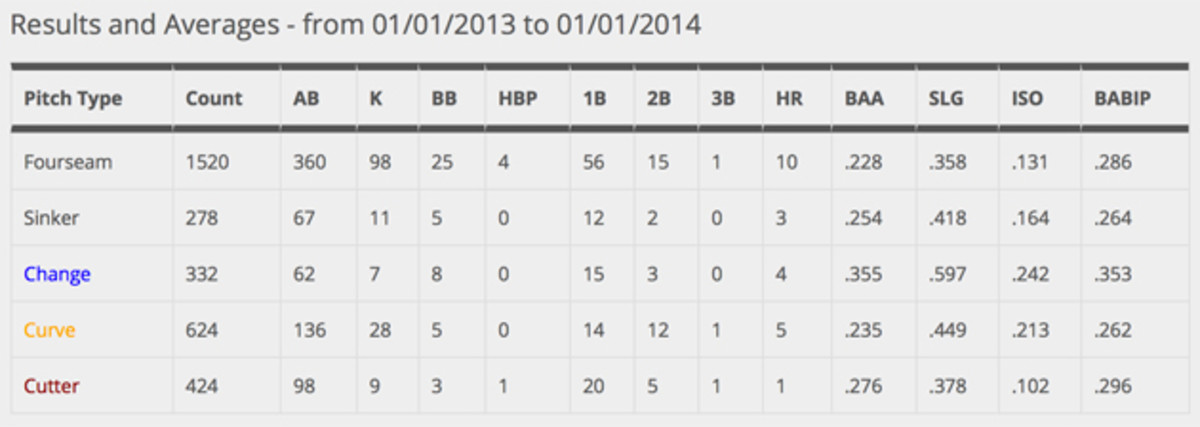
Clearly, the cutter wasn’t causing his gopherball-itis. Rather than focusing on pitch type, let’s look at pitch location. The following heat maps show how frequently Quintana threw pitches to a certain zone. The nine squares in the middle represent the strike zone, while the ones around it are off the plate. The first one is from 2013, and the second is from last year.
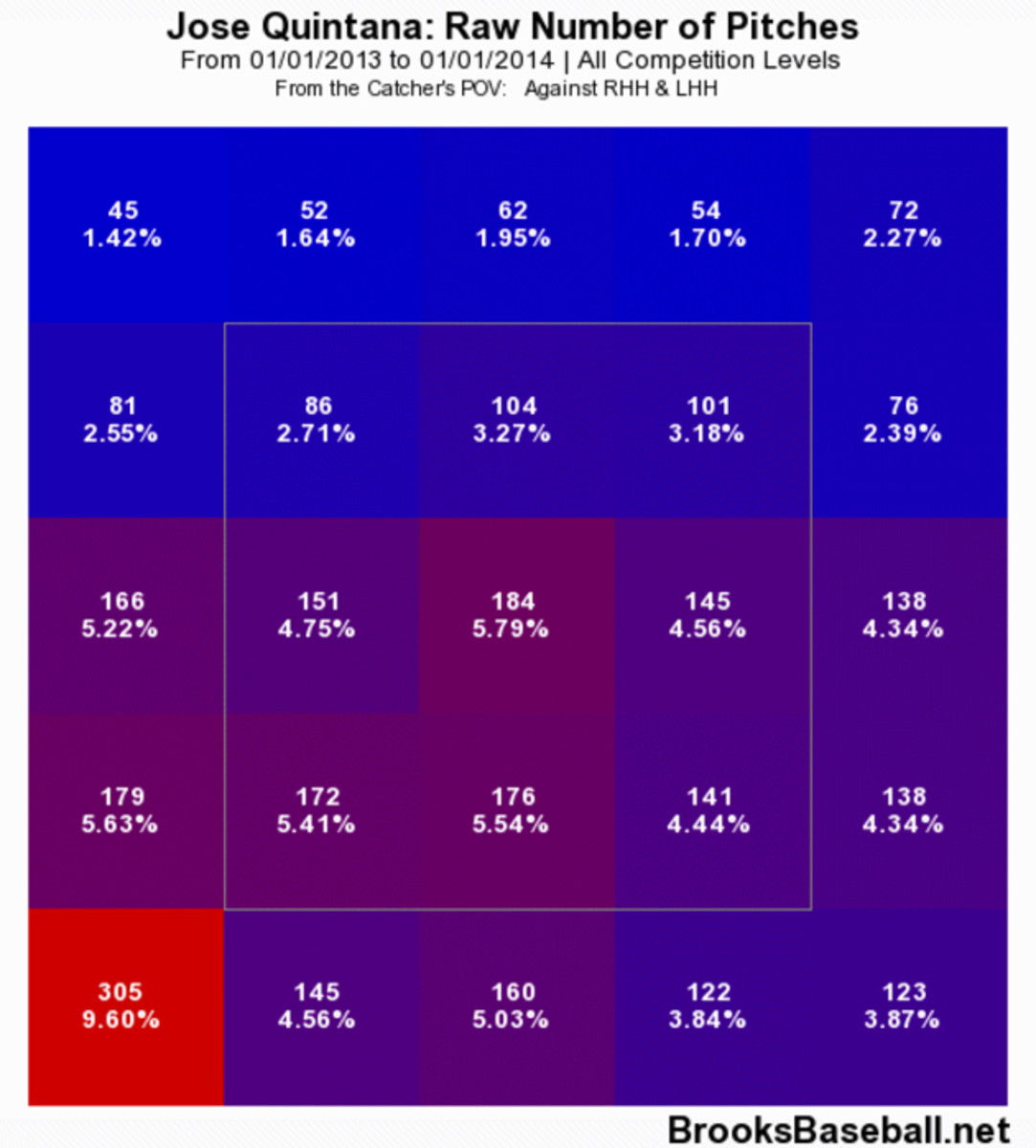
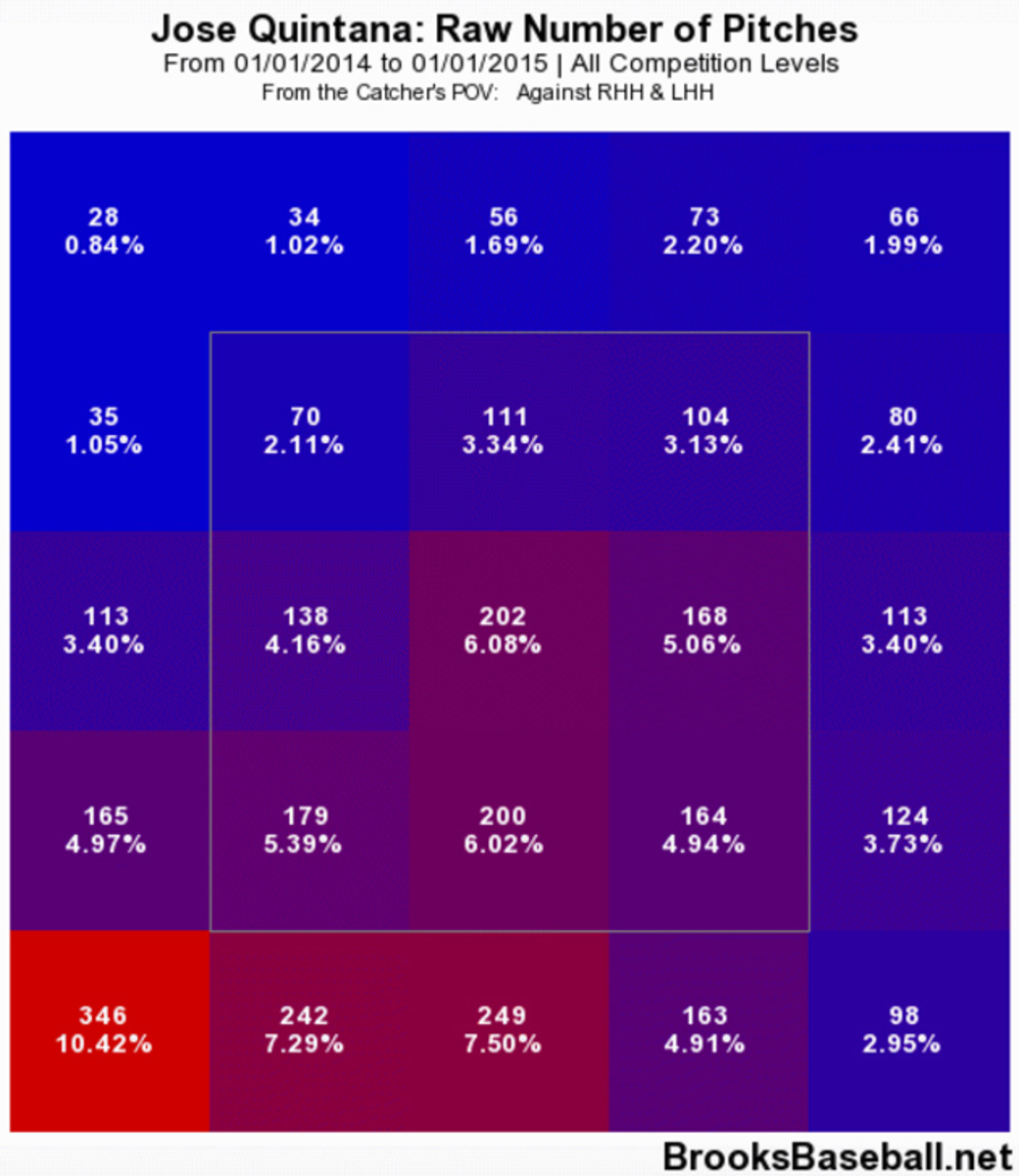
In 2013, 52.26 percent of Quintana’s pitches hit one of those bottom two rows. Last year, that number skyrocketed to 58.12 percent, an increase of more than 11 percent. Unsurprisingly, hitters weren’t able to do much with those pitches, at least in the power department, evidenced by Quintana’s isolated slugging against heat map.
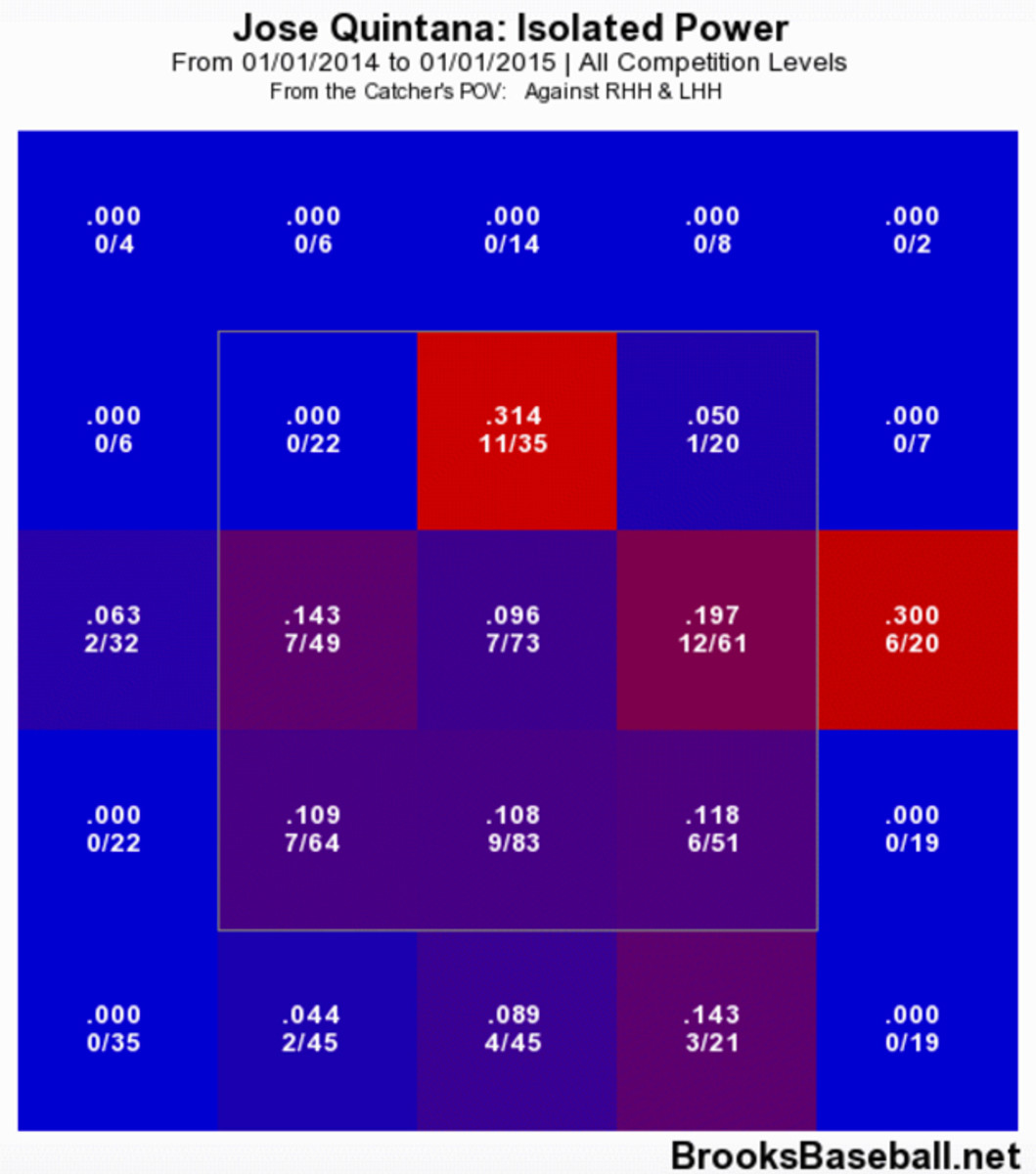
However, there was one more thing at play that was revealed in studying Quintana’s heat maps. Check out his ISO allowed on fastballs from 2013 and '14.
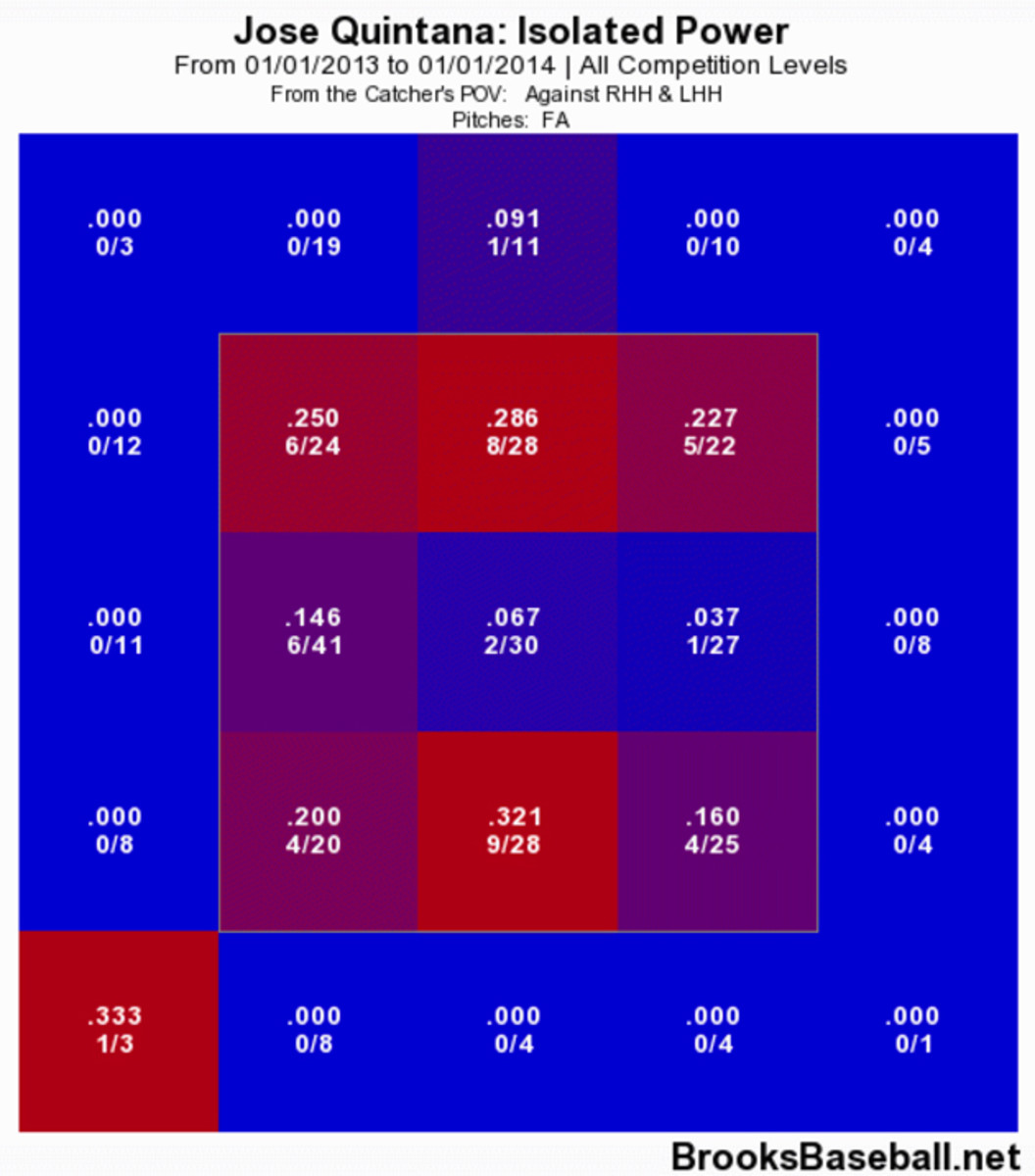
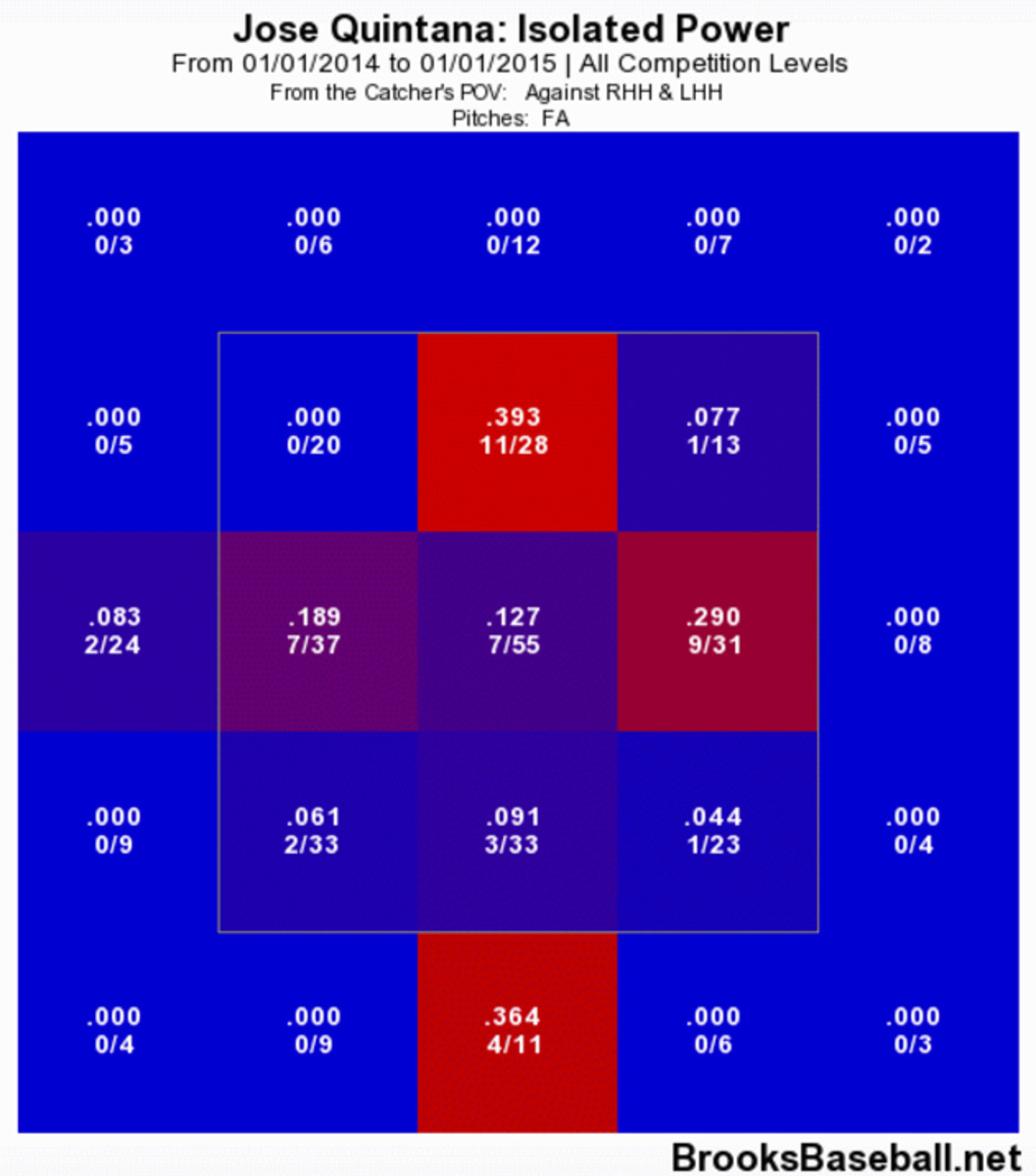
Look at all that red at the top of the zone in 2013 that was replaced by deep blue (with the exception of up-middle) in '14. What changed? The very nature of Quintana’s fastball. Check out the difference in the pitch’s horizontal movement from year to year.
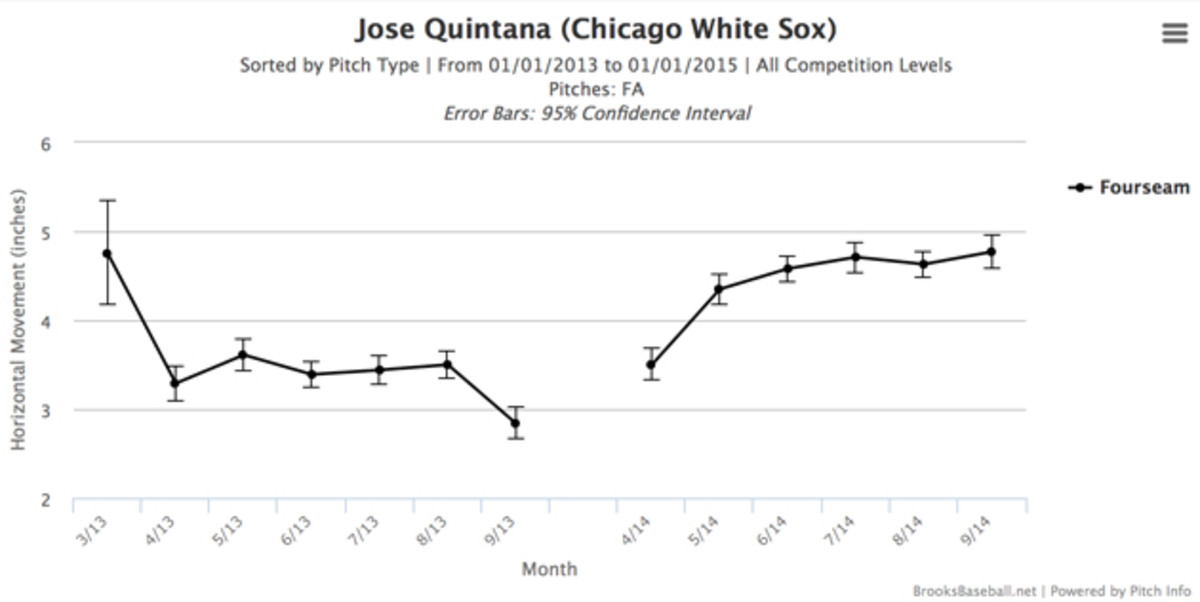
Granted, 4.39 inches of horizontal movement on a four-seamer doesn’t place Quintana among the league leaders, but it was more than an inch better than his mark in 2013. It’s also enough to explain why Quintana was able to keep the ball in the park when he attacked the top of the zone with his fastball last year.
Quintana developed into a legitimate No. 2 starter last season. He’ll still be overshadowed by Chris Sale, and now Jeff Samardzija, this season in Chicago, but he has the ceiling of a fantasy SP2.
